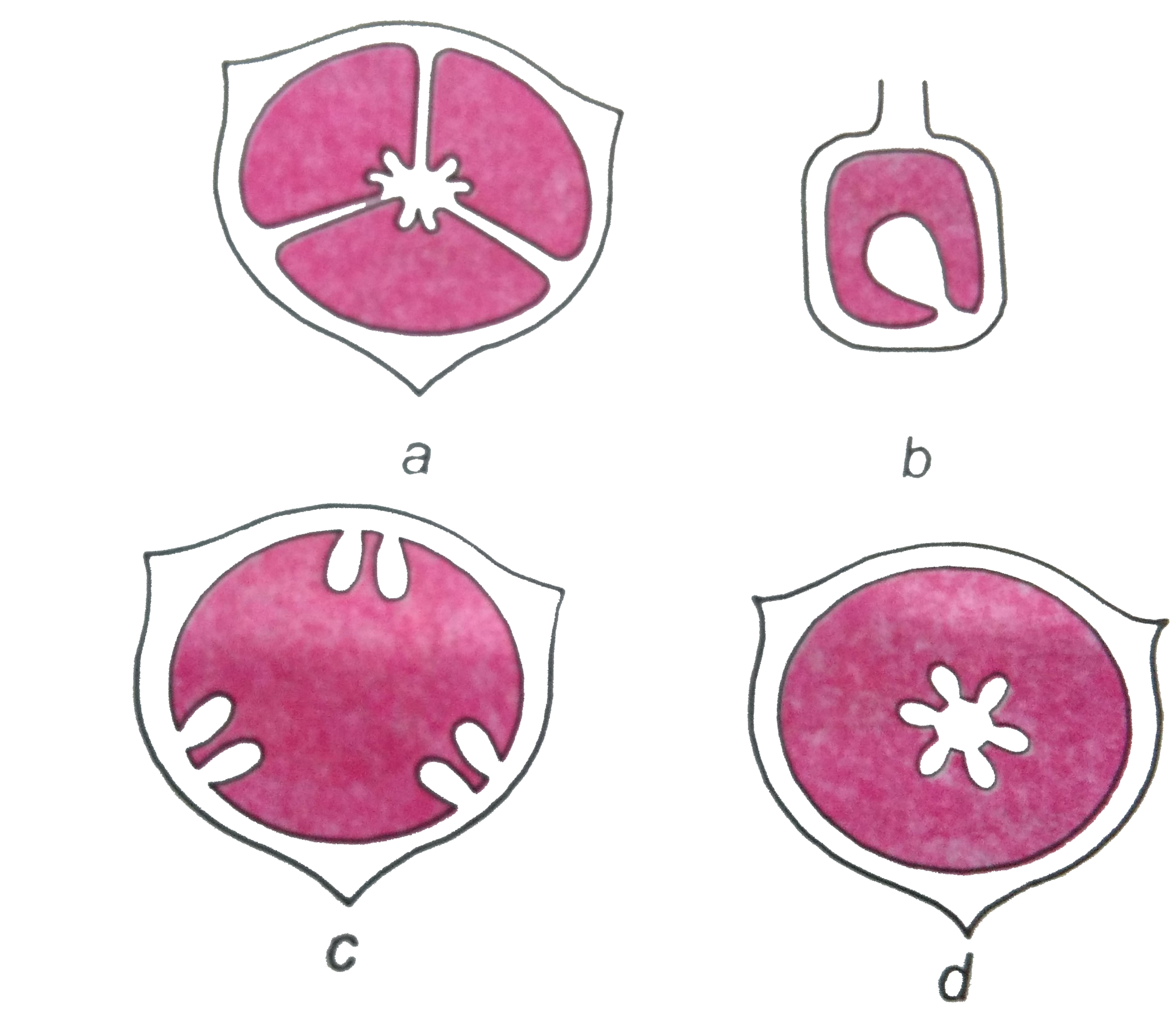(a) Identify the placentation shown in following figures :

(b) Write the type of placentation found in following plants. (A) Mustard (B) Dianthus (C) Pea
(D) Marigold (E) Lemon (F) Argemone
Text Solution
(a) (A) Marginal, (B) Parietal, (C) Axile, (D) Free central, (E) Basal, (F) Superficial.
(b) (A) Parietal, (B) Free central, (C) Marginal, (D) Basal, (E) Superficial, (F) Parietal.
|
Topper's Solved these Questions
- MORPHOLOGY OF FLOWERING PLANTS BOOK - MODERN PUBLICATIONCHAPTER - MORPHOLOGY OF FLOWERING PLANTS EXERCISE - Chapter Practice Test (Section-D)
2 Videos
- MINERAL NUTRITION BOOK - MODERN PUBLICATIONCHAPTER - MINERAL NUTRITION EXERCISE - CHAPTER PRACTICE TEST
16 Videos
- NEURAL CONTROL AND COORDINATIONBOOK - MODERN PUBLICATIONCHAPTER - NEURAL CONTROL AND COORDINATIONEXERCISE - Chapter Practice Test
11 Videos
Similar Questions
Knowledge Check
Identify the names of the following figure A, B, C, D,E and F from the given option
 AA- Tape worm, B- Liver fluke, C- Male Roundworm D- Female Roundworm E- Nereis F- HirudinariaBA- Tape worm B- liver fluke C- female Roundworm D- Male Roundworm E- Nereis F- HirudinariaCA- Tape worm B- Liver fluke C- Male Roundworm D- Female Roundworm E- Hirudinaria F- NereisDA- tape worm B- Liver fluke C- female Roundworm D- Male Roundworm E- Hirudinaria F- Nereis
AA- Tape worm, B- Liver fluke, C- Male Roundworm D- Female Roundworm E- Nereis F- HirudinariaBA- Tape worm B- liver fluke C- female Roundworm D- Male Roundworm E- Nereis F- HirudinariaCA- Tape worm B- Liver fluke C- Male Roundworm D- Female Roundworm E- Hirudinaria F- NereisDA- tape worm B- Liver fluke C- female Roundworm D- Male Roundworm E- Hirudinaria F- NereisIn which of the following plant the type of placentation is free central?
AMustardBGarden peaCDianthusDWheatIn the diagram of types of placentation a, b, c and d represent
 ABasal, axile, parietal and free centralBFree central, Paritetal, basel and axileCAxili, basal, parietal and free centralDParietal, axile,free,central and basal
ABasal, axile, parietal and free centralBFree central, Paritetal, basel and axileCAxili, basal, parietal and free centralDParietal, axile,free,central and basal
Identify a, b, c,d,e and f in the following table :

View SolutionIdentify a, b, c,d,e and f in the following table :

View SolutionIdentify the type of tendrils found in the following plants— (a) Cucumber (b)pea ( c)and (d)in the table given below:
View SolutionIn which of the following plants, the type of placentation is parietal?
View SolutionWrite placentation, inflorescence and type of fruits of the following: (a) Pionsettia (b) Merigold (c) Onion (d) Tomato (e) Radish
View Solution

